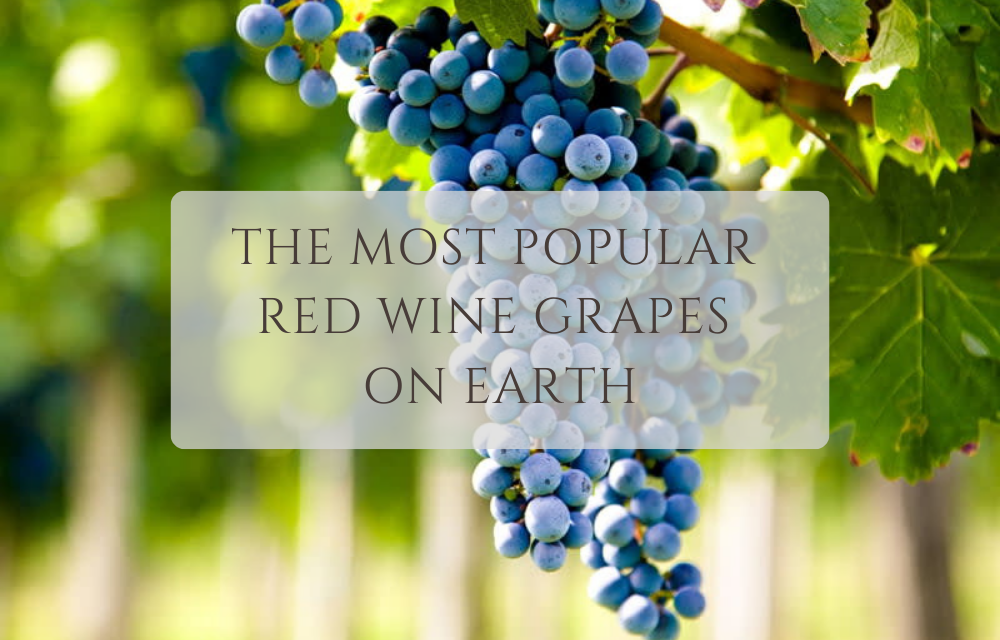All wines are made using grapes as their base. They establish the framework of the wine and serve as the basis for all subsequent modifications that a winemaker makes. Your wine gets its alcohol from grapes. Grapes are what give wine its color. The grape varietal has a significant impact on the flavor. Only about 1300 of the more than 10,000 types of wine grapes are used to make wine. Only a few of those are widely used on a global scale.
Wine Embassy will demonstrate how various grapes produce various RED WINE and highlight some best options that you should look out for.
MERLOT
The signature Bordeaux grape used in both single-varietal wines is merlot, which is derived from the French word “merle” for “blackbird.” France, Italy, Chile, and other cool-climate locations all have merlot vineyards (California and Australia).
Merlot’s crimson hue is a result of the red-skinned grapes used in its production. Wines can be opaque to semi-opaque to deep ruby red when they are young. The color of merlot ages, losing pigment and brightness and changing to garnet.
Merlot wines have a velvety tannic texture, robust body, and fruity tastes. The tastes of plum, blackberry, black cherry, graphite, and herbal aromas can all be found in merlot wines.
*Bordeaux: places in the southwest of France.
PINOT NOIR
The names of the grape types are derived from Pinot Noir, which has been produced in the French region of Pignolis since the Middle Ages. The origins of the historic grape variety Pinot Noir in Burgundy, France, are obscure. Around the world, Pinot Noir is grown in regions with a colder temperature. The Pinot Noir vine plants, however, are delicate to wind, frost, and other extreme weather.
Although it can be used to make red, white, rosé, and sparkling wine, red wine is the most frequently produced using it. Wines made from pinot noir have a medium body, a light red color, and little tannin. Strawberry, raspberry, and cherry flavors are featured in these delectable snacks. A rich, earthy flavor with a flavor profile reminiscent of the forest floor develops in well-aged Pinot Noir wines.
CABERNET SAUVIGNON
The most popular red wine in the world is cabernet sauvignon. Despite having its roots in France, cabernet is today made in almost all of the world’s main wine-producing regions, from Chile to California, Washington State, and western Australia because it prefers hot climates.
A full-bodied red wine with flavors of dark fruits like black cherry, blackberry, and black currant is produced from the Cabernet Sauvignon grape variety. Additionally, it contains spicy and black pepper savory undertones. The wine has a high level of tannin and acidity due to the Cabernet grape varietal. The strong aroma of cabernet mutes the aromas of fruit and the too sweet undertones.
GRENACHE
Grenache (Garnacha) is a red wine grape variety grown extensively in France, Spain, Australia and the United States. The Grenache vine is resistant to wind and drought.The vine likes hot, well-drained, dry soils but is relatively adaptable to all kinds of vineyard terroir.
Grenache can be produced in a variety of ways and colors, including sweet, dry, red, and white. Because of this, it blends well with the juicier, more tannic kinds. Grenache has a medium to full body and a beautiful color. Its smells include orange rind, raspberry, plum, and smoke. Grenache is a low-tannic grape that is sweet, fruity, and aromatic.
SYRAH
Syrah is a grape that grows all over the world, from Chile to South Africa, Argentina, and Washington State. It was first cultivated in southern France from the Dureza and Mondeuse Blanche vines. With over 500,000 acres of vines, syrah is the sixth most widely planted grape worldwide. Syrah ripens best in dry climates in terroirs and soils that allow for deep root penetration.
Syrah provides rich, deep-colored red wines that can, in the greatest cases, age and develop for many years or even decades. Blackberries, plums, black cherries, flowers, spices, earth, chocolate, licorice, blueberry, cassis, pepper, and truffles are a few common tastes and smells. Many of these ancillary characteristics grow as the wine gets older.


